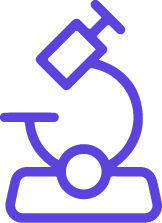Balancing human health, regulatory compliance, and environmental protection is becoming increasingly complex for pharmaceutical companies. While drug safety for humans is rigorously assessed throughout development and approval, the potential impact of pharmaceuticals on the environment — particularly on non-target organisms — has long been less scrutinized.
That is changing. As environmental concerns rise globally, regulatory bodies like the European Medicines Agency (EMA) have updated their expectations. Environmental Risk Assessment (ERA) has become an essential part of the marketing authorization process in the EU, the US, and beyond. The latest revision of the EMA guideline, in effect since September 1, 2024, reflects a more holistic and science-based approach to managing the environmental footprint of medicinal products.
In this blog post, we explore the purpose and structure of Environmental Risk Assessments (ERA) and how the EMA guideline shapes their design and expectations for pharmaceutical companies.
Why Environmental Risk Assessment (ERA) matters
An Environmental Risk Assessment evaluates the potential impact of active pharmaceutical ingredients (APIs) on the environment. After human consumption, pharmaceuticals often enter wastewater systems via excretion. Because many treatment plants cannot fully remove these compounds, APIs may end up in surface water, groundwater, and soil.
Over time, this can lead to:
- Disruption of aquatic ecosystems
- Endocrine effects in fish and amphibians
- Antimicrobial resistance
- Bioaccumulation in the food chain
How the ERA works: Phase I and Phase II
The updated guideline retains the two-phase structure but adds clarity and flexibility.
Phase I: screening and exposure estimation
Phase I determines whether a product's environmental exposure warrants further investigation. This begins with calculating the Predicted Environmental Concentration (PEC) in surface water, based on dosage, excretion rates, and market use.
- If the PEC is below the threshold of 0.01 µg/L, the product is generally considered low-risk.
- If the PEC exceeds the threshold, refinements can be made—e.g., using real-world prevalence data, worst-case treatment regimens, or market consumption estimates.
- If PEC remains above the threshold after refinement, the product proceeds to Phase II.
Phase II: detailed ecotoxicological assessment
Phase II involves a tiered evaluation of the product’s impact on:
- Aquatic and sediment species
- Terrestrial ecosystems
- Species at risk of secondary poisoning
- Microbial processes in sewage treatment plants (STPs)
This phase also considers persistence, bioaccumulation, toxicity, and specific modes of action, such as antimicrobial or endocrine effects.
How the EMA guideline shapes ERA practice
Since the first version in 2006, our understanding of how pharmaceuticals behave in the environment has advanced significantly. The revised EMA guideline (EMEA/CHMP/SWP/4447/00 Rev. 1 — Corr.) reflects this evolution and supports broader initiatives like the European Green Deal and the One Health concept. Key elements include:
1. Enhanced tiered approach
The two-phase model remains, but the decision tree is clearer, with more guidance on progression between tiers and when to apply refinements.
2. Tighter exemption rules
Exemptions for generics, OTCs, or products with established APIs are more limited. Products with new indications or routes of administration must undergo full ERA.
3. Assessment of specific modes of action
The guideline now explicitly requires assessments for specific mechanisms of concern, such as endocrine disruption and antibacterial effects.
4. Updated data requirements
New endpoints for aquatic and sediment species improve ecological relevance. The guideline also supports read-across and data reuse to reduce unnecessary animal testing.
5. Lifecycle environmental responsibility
The EMA encourages ongoing environmental monitoring and post-approval obligations for high-risk compounds, shifting toward a lifecycle risk management approach.
Why this matters for the pharmaceutical industry
Conducting a thorough ERA is no longer a formality — it’s a regulatory expectation and a public responsibility. The updated guideline:
- Establish robust communication channels: Leverage collaborative tools like Microsoft Teams or Slack, Jira to maintain transparency and streamline coordination.
- Set clear expectations and KPIs: Define quality benchmarks, turnaround times, and success metrics from the outset to align both internal and external teams.
- Implement secure processes: Adopt data encryption, access control, and regular audits to ensure that sensitive information is protected.
Recommendations may include specific disposal methods, routine environmental monitoring, or post-market follow-up actions—all of which require forethought during development.
Conclusion: a new era for environmental accountability in pharma
Environmental Risk Assessment is now a vital component of drug development, marketing authorization, and long-term sustainability. With the EMA guideline in place, companies are expected to go beyond basic compliance to anticipate, assess, and manage environmental risks proactively.
At QbD Group, we support pharmaceutical companies in navigating complex regulatory changes, including ERA requirements. Need help aligning your product development with the latest EMA expectations? Let’s talk.




















